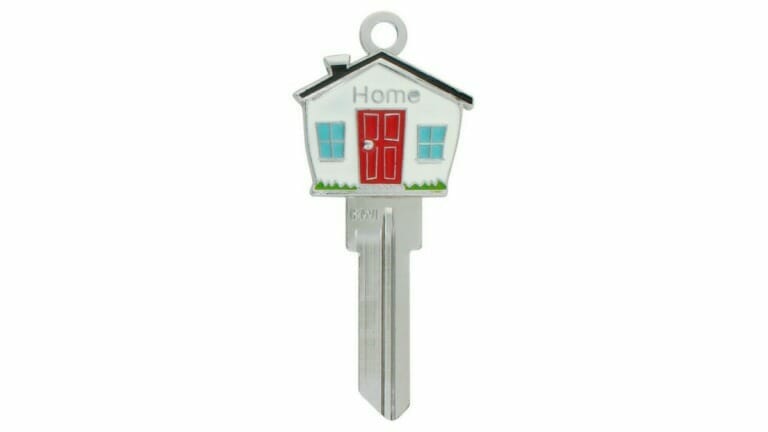- How Do Home Equity Loans Work?
- How Much Can You Borrow Against the Equity In Your Home?
- Home Equity Loan Alternatives: HELOCs and Cash-Out Refinance
- When Is It a Bad Idea to Get a Home Equity Loan?
- How to Improve Your Approval Rating for a Home Equity Loan
- Are Home Equity Loans Tax Deductible?
- How Much Do Home Equity Loans Cost?
- Lender Red Flags and How to Protect Yourself
- Periodic Cap, Lifetime Cap, Margins and Other Essentials
- Bottom Line
This is a complete guide to understanding home equity loans. I’m going to show you strategies for protecting yourself against high-interest rates, avoidable penalties, and unnecessary costs.
We’ll also look at alternatives including a home equity line of credit (HELOC) and cash-out refinancing. Simply put, if you want to leverage your home’s value affordably, you’ll love this guide.
Let’s get started.
What Is a Home Equity Loan?
A home equity loan lets you borrow money against your house by using its equity as collateral. It’s a second mortgage and a type of secured debt.
They usually bear lower interest rates than credit cards or personal loans (unsecured debt) and are easier to get. Your home’s value must be higher than what you owe on your mortgage to qualify.
How Do Home Equity Loans Work?
Once you’re approved, you’ll receive the loan amount in one lump sum. The interest will be a fixed rate, and you’ll have monthly payments spread across the life of the loan (5 to 30-year terms). The loan is amortized, meaning you’ll pay back both the interest and principal simultaneously.
The quicker you pay back the loan, the less interest (and therefore less money) you’ll pay over time.
Tweet ThisWhat Credit Score Does a Home Equity Loan Require?
You need a minimum credit score of 620. However, home equity loans are easier to get because you’re leveraging an asset (your home). So having a lower credit score may not hurt as much as opposed to trying to snag a personal loan or qualify for a new credit card.
How Much Can You Borrow Against the Equity In Your Home?
In most cases, lenders only allow you to borrow up to 80% – 85% of your home’s value minus what you owe. For example:
Your home is worth $500,000. You still owe $250,000 (your mortgage). Your lender will let you borrow 80% of $500,000.
$500,000 (your home’s value) multiplied by 80%(maximum allowable amount from your lender) = $400,000
$400,000 minus $250,000(what you still owe on your mortgage) = $150,000
You’re approved for a $150,000 home equity loan.
Home Equity Loan Terms
The terms are fixed. You know exactly how much you’ll be paying every month and you’ll know exactly when you will have paid off the entire balance. Why?
Because it was agreed upon when you signed your loan contract. The interest rate is fixed (meaning it won’t fluctuate) and because it’s amortized, you’ll have a scheduled monthly payment plan down to the last cent.
Note: Interest rates set by lenders follow an index like the prime rate which decides your APR. The prime rate fluctuates monthly. If your interest rate is fixed, you don’t need to worry about it going up one month and down the next. Fixed rates are static.
Home Equity Loan Requirements
Home equity loan qualifications checklist:
- 15-20% equity in your property (equity=ownership. it’s the amount of your home that you own). For example, if your home is worth $400,000, you must have paid $80,000 (20%) of your mortgage off.
- You’re gainfully employed with a steady income. Your lender must be assured that you have cash coming in.
- A debt-to-income ratio of no more than 43%. This is your monthly debt divided by your monthly income. If your monthly credit card debt is $1,000 and your monthly earned post-tax income is $6,000 it looks like this: $1,000 (your monthly credit card debt) divided by $6,000 (your monthly income) or 1,000/6,000 = 16% debt-to-income ratio.
- Credit score of 620
Why Get A Home Equity Loan?
Home equity loans are excellent if you know exactly what you need the money for and you need it all at once. Maybe your roof is on its last legs and needs an upgrade. Perhaps it’s to finance a college education. You’re strapped for cash and need something fast(ish).
Whatever your situation, home equity loans make sense for you if:
- You know the exact dollar amount needed.
- It’s needed all at once.
- You’ll have no trouble making monthly payments.
This free course outlines a proven framework that thousands of people have used to eliminate their debt, develop better money habits, and start building a secure financial future.
Home Equity Loan Alternatives: HELOCs and Cash-Out Refinance
Home Equity Line of Credit (HELOC)
A home equity line of credit functions like a home equity loan, but instead of receiving a lump sum, you receive an approved maximum line of credit that’s used when you need it. In many cases, you’re given a credit card, debit card or checks.
They’re ideal for when you’re not sure when you’ll need the money or if the money’s needed over many years.
A HELOC also differs from a home equity loan because home equity lines of credit have variable interest rates. It’s the opposite of a fixed, static rate.
Variable interest rates are fluid. They fluctuate with the prime rate so whatever it is that month, that’s the interest rate you pay that month.
A benefit of a HELOC is that it lets you exercise greater control over your monthly payments and amount you owe because you’re taking it out only when you need it. You’re not making payments on the full amount you’re pre-approved for – just your monthly balance.
Think of a HELOC like a bar tab. When you pull up a stool at your local pub and order a pint, the bartender doesn’t pour all your beers at once – only what you order at one time.
How A Home Equity Line of Credit Works
A HELOC works like a credit card: you produce a monthly balance and pay it down at the end of each month.
A HELOC comes with a draw period. Draw periods can last up to 10 or even 20 years. This is the time when you’re allowed to withdraw from your pre-approved credit line. Monthly payments can be either interest only or, interest and principal.
In the early stages of a draw period, it’s common to have a lower (discounted) interest rate. On average, that ends after a year.
When the draw period ends, you arrive at the repayment period. You’re no longer granted access to the money. You must pay down the balance and your line of credit has officially ended.
Note: Be sure you know when you’re going to need the money within your draw period. If you want to pay it back quicker, borrow smaller amounts and repay the principal. It may cost you less money than a home equity loan if you’re making calculated payments.
Cash-Out Refinance
Cash-out refinancing replaces your existing mortgage with a new one that’s got a higher balance. It’s more than what you owe.
Here’s the kicker.
Once the new, higher balance mortgage replaces the old one, the extra money is given to you as cash.
Kitchen need renovating? Financing your Ph.D.? Never been to South America? The money is yours to spend as you see fit.
It might make sense for you to do a cash-out refi if you find a mortgage with a lower interest rate than your current one and need a more substantial loan amount. You also have the option for either an adjustable or fixed interest rate.
A cash-out refinance also requires 15% – 20% equity in your home. They work like this:
Your home is worth $600,000. You owe $70,000. But you also want an extra $40,000. You can apply for a cash-out refi of $110,000 – the amount you owe paired with the extra cash you need.
You’ll pay interest on the loan’s duration.
When Is It a Bad Idea to Get a Home Equity Loan?
A loan is still debt. It’s never a good idea to go into debt if you’re struggling to pay your monthly bills or credit card payments (also debt) – especially when you’re using your house as collateral.
Ask yourself, “Can I afford to take this on right now comfortably?” It’s a calculated risk. Only do it if you can afford it.
Lenders will look not only at your debt-to-income ratio but your loan-to-value ratio as well. To determine this number, divide the amount you owe on your mortgage by your home’s current market value.
If your home’s current market value is $650,000 and you owe $450,000…
Then $450,000 divided by $650,000 (450k/650k) = 69% LTV ratio.
On average, lenders only approve loans with an LTV ratio between 80% and 85%.
Note: If you can’t make your monthly payments the bank can foreclose on your home.
How to Improve Your Approval Rating for a Home Equity Loan
There’s a lot of ways to improve your loan-to-value ratio(LTV), your debt-to-income ratio(DTI), and your credit score.
To improve your LTV ratio, focus on lowering your mortgage. Make higher monthly payments. Don’t just pay what’s required. This way you’re building equity in your home at an accelerated rate.
Equity’s built in two ways: value increases or debt decreases.
You’ll look favorably in the eyes of lenders.
To lower your DTI ratio either earn more monthly income or reduce your monthly debt.
Build up your credit score by lowering your credit card utilization to 30%. This is what you owe divided by your credit card limit. If you’ve used $1,500 of your $9,000 credit card limit then:
$1,500/$9,000 = 16% credit card utilization rate.
Keep all cards in good standing and don’t close any credit card accounts. Why?
Because you establish a long credit history by keeping your accounts open. The length of time your accounts are open affects your score too. The longer, the better.
Note: Even if you don’t use a specific card, attach one cheap monthly bill to it like Netflix and automate your payments. This way your account stays open and, as long as you keep the card in good standing, you establish an excellent credit history.
Are Home Equity Loans Tax Deductible?
Calculate for Taxes
Despite the Tax Cuts and Jobs Act of 2017, you can still deduct the interest payments on your home equity loan. The IRS says:
Taxpayers can often still deduct interest on a home equity loan, home equity line of credit (HELOC) or second mortgage, regardless of how the loan is labeled.
You can deduct the interest on a loan:
- Up to the first $750,000 for single/joint filers and $375,000 for a married taxpayer filing separately. If the loan amount exceeds $750,000 or $375,000 respectively, the remaining balance isn’t deductible. The limit is higher ($1 million for single filers/$500,000 for married couples filing separately) if the debt occurred before December 16, 2017.
- The loan is used to “buy, build or improve the taxpayer’s home that secures the loan.”
Caveat: The loan must be used for home improvements. It can’t be used for personal living expenses like paying down credit card debt or taking a vacation.
How Much Do Home Equity Loans Cost?
It’s not as simple as asking for a loan and magically getting it because the lender thinks you’ve got a great smile. Like any loan, there’s an application process, a filing period as well as fees and closing costs.
As the saying goes – it takes money to make money.
Knowing the terms of your loan will help you avoid unexpected fees. You won’t be left with a “surprise” when you’re about to close. It pays to do your homework as every loan is different due to the unique circumstances of the borrower (you).
Below are some things to be aware of when shopping around. Lenders vary. It’s good to be mindful of these when going in.
Common Fees
- Application fee = $50 (might be lower depending on your lender)
- Title search and insurance = $300 – $1,000 (Because lenders need to know it’s you who owns the property)
- Notary signing services up to $100 (Because you’re entering into a legal and binding contract)
- Appraisal fee = $150 – $1,000
- Credit report = $40 (you get one free report per year from each of the three major credit reporting bureaus. However, once you exceed that number it’ll cost you)
- Flood elevation certificate = $350 (Means you’re required to have flood insurance because you live in a flood plain)
- Closing costs = 3% – 6% of loan amount
Note: Apply to lenders where you’ll likely get approved.
Know your dollar amount and all costs upfront by doing your research. Know the APR. The more specific you are, the quicker and easier the process will be. Why?
Because lenders differ on eligibility requirements and loan amounts. Get to know your local banks and credit unions. Tell them why you’d make a great loan candidate. Ask questions. Get personal. Local financial institutions know the area and prefer to grant a loan if it’s in the community.
Think of it as building community/equity relations.
Note: Possible lower APRs found at credit unions because they’re nonprofit.
Lender Red Flags and How to Protect Yourself
![]()
In a perfect world, there’d be no shady business practices, and everyone would be looking out for each other’s best interests.
But that’s not the world we live in.
Be wary of lenders who:
- Secretly insert types of insurance into your paperwork without your knowledge or say you have to have X type of insurance because it’s required. This is called insurance packing.
- Change the terms of your loan just before closing – known as bait and switch.
- Encourage you to refinance your loan multiple times. This practice leads to higher fees, higher interest rates, and possible prepayment penalties. This practice is called loan flipping.
- Encourage a practice known as equity stripping. They tell you to lie on your paperwork or push a loan on you that you can’t afford.
Periodic Cap, Lifetime Cap, Margins and Other Essentials
Look at the periodic cap. It’s the limit on interest rate changes at one time. Most applicable to those with a variable rate.
While you’re at it, determine the lifetime cap. It’s the limit on interest rate changes during the life of the loan. Ask your lender which index they use and how often and how much rates are allowed to change.
Check the margin. This determines the interest you’re charged by adding an amount to the index the lender tracks.
ADDITIONAL FEES: Ask your lender if there are any fees like a membership or participation fee. Certain lenders require you to make payments for the full loan term. Transaction fees occur every time you borrow money. Is your lender going to charge you one of those too?
Bottom Line
Costs add up. If you don’t like what’s being offered walk away, don’t agree to anything that’s unclear or isn’t in your best interests. Be curious and ask questions. Lenders are competing for your business and should treat you like a VIP. Don’t settle for second-best. Shop around.
Your loan term should be fully transparent. Everything from the application fee to the underwriting costs to your interest rate should be itemized, listed, and in plain sight. Don’t let a lender slip an additional cost in without a clear explanation.
Treat it like a negotiation. Don’t be shy about asking for a lower rate or waiving certain fees when applicable. Try framing your questions with phrases like:
“That fee seems unusually high. How can we get it lower/removed?”
“How else can you help me get…[a better interest rate/reduced costs/fees waived]”
Avoid questions with a yes/no response like:
“Can you lower the interest rate?”
“Can we waive this fee?”
You can also cancel the agreement three days after signing without penalty. It’s known as the Three Day Cancellation Rule and must be done in writing by the end of the third business day.
Talk to everybody: Friends, family, real estate agents, and your local financial institutions. You’re putting your house up as collateral – don’t lose it. Leverage your loan agreement by doing your due diligence.



